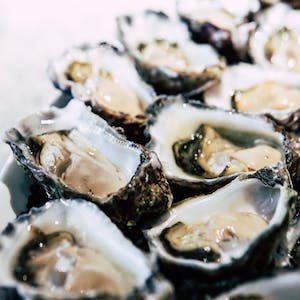Preliminary survey on the occurrence of microplastics in bivalve mollusks marketed in Apulian fish markets

Accepted: 7 February 2023
HTML: 22
All claims expressed in this article are solely those of the authors and do not necessarily represent those of their affiliated organizations, or those of the publisher, the editors and the reviewers. Any product that may be evaluated in this article or claim that may be made by its manufacturer is not guaranteed or endorsed by the publisher.
Authors
Microplastics (MPs) are a relevant threat to food safety because they are ingested by humans through various foods. Bivalves are at high risk of microplastic contamination due to their filter-feeding mechanism and pose a risk to consumers as they are ingested whole. In this work, microplastics were detected, quantified, identified, and classified in samples of mussels (Mytilus galloprovincialis) and oysters (Crassostrea gigas) marketed in the Apulia region. The total number of plastic debris was 789 particles in the mussel samples and 270 particles in the oyster samples, with size ranging from 10 to 7350 µm. Fragments with size within the category of 5-500 µm were the predominant findings in both species, with blue as the predominant color in mussels and transparent in oysters; most of the debris was polyamide and nylon polymers in the mussels and chlorinated polypropylene in the oysters. These results show that mussel and oyster samples purchased at fish markets are contaminated with microplastics. The sources may be diverse and further studies are needed to assess the impact of the marketing stage on microplastic contamination in bivalves to better define the human risk assessment associated with microplastic exposure from bivalves consumption.
How to Cite

This work is licensed under a Creative Commons Attribution-NonCommercial 4.0 International License.
PAGEPress has chosen to apply the Creative Commons Attribution NonCommercial 4.0 International License (CC BY-NC 4.0) to all manuscripts to be published.

 https://doi.org/10.4081/ijfs.2023.10906
https://doi.org/10.4081/ijfs.2023.10906



